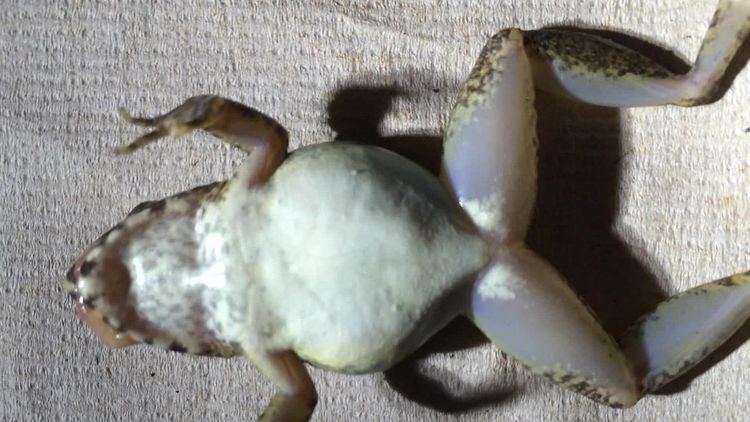 | ||
Ovoviviparity, ovovivipary, or ovivipary, is a mode of reproduction in animals in which embryos that develop inside eggs remain in the mother's body until they are ready to hatch. This method of reproduction is similar to viviparity, but the embryos have no placental connection with the mother and receive their nourishment from a yolk sac. In some species, this is supplemented by uterine secretions or other maternal provisioning.
Contents
The young of ovoviviparous amphibians are sometimes born as larvae, and undergo metamorphosis outside the body of the mother, and in some insect species, such as the tachinid flies, the embryos develop to the first larval instar stage before they are laid and the eggs hatch almost immediately.
Ovoviviparity
Ovoviviparous animals are similar to viviparous species in which there is internal fertilization and the young ones are born alive, but differ in that there is no placental connection and the unborn young ones are nourished by egg yolk; the mother's body does provide gas exchange (sharks and rays). The terms "ovoviviparity" or "aplacental viviparity" have been deprecated because they encompass several unrelated modes of reproduction.
In some species, the internally developing embryos rely solely on yolk. This is known as "yolk-sac viviparity" and is regarded as a type of lecithotrophy (no maternal provisioning). Other species exhibit matrotrophy, in which the embryo exhausts its yolk supply early in gestation and mother provides additional nutrition. This additional provisioning may be in the form of unfertilized eggs (intrauterine oophagy), uterine secretions (histotrophy) or it may be delivered through a placenta. The first two of these modes were categorized under histotroph viviparity, or aplacental viviparity.
Amphibians
The young of ovoviviparous amphibians are sometimes born as larvae, and undergo metamorphosis outside the body of the mother. Modes of reproduction include based on relations between zygote and parents:
Ovolarviparity
Some insects, notably tachinid flies, are ovolarviparous, which means that the embryos develop into the first larval stage (instar) within the eggs while still in the female's oviduct. As a result, the larvae hatch more rapidly, sometimes immediately after egg deposition, and can begin feeding right away. A similar phenomenon is larviparity, in which larvae hatch before the female delivers them, although this may be mistakenly identified in species with very thin and transparent egg membranes.
